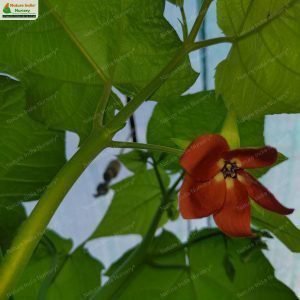Wallace’s Tree (Aphanamixis polystachya) is a tall, evergreen tree native to South China and Tropical Asia, particularly found in forests and riverbanks. It is characterized by its large size, reaching up to 30 meters in height, and its aromatic, small greenish-yellow flowers that grow in clusters along its branches.
Habitat: This species thrives in tropical and subtropical climates, typically in moist, well-drained soils. It can be found growing wild in rainforests and is also cultivated for its timber and medicinal properties.
- Light: Full sun to partial shade.
- Soil: Well-drained, fertile soil.
- Watering: Regular watering, especially during dry spells.
- Maintenance: Prune occasionally to remove dead or damaged branches. Wallace’s Tree is generally low-maintenance once established.
Additional Information: The bark, leaves, and seeds of Wallace’s Tree are used in traditional medicine for various ailments. The timber is valuable and used in construction and furniture making. This tree also plays a role in local ecosystems, providing habitat and food for wildlife.




